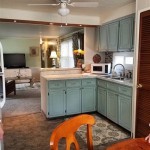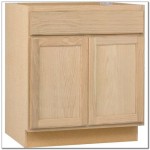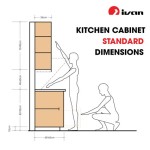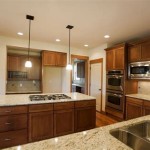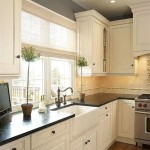Kitchen Design: The Allure of White Appliances and Dark Cabinets
The combination of white appliances and dark cabinets in kitchen design represents a striking and versatile aesthetic. This pairing offers a unique blend of modern and traditional elements, allowing for a kitchen space that is both visually appealing and functionally efficient. This article will explore the various aspects of this design choice, including the advantages, design considerations, material choices, and complementary elements that contribute to a successful kitchen incorporating white appliances and dark cabinets.
Choosing a kitchen design involves careful consideration of various factors, including aesthetics, functionality, budget, and personal preferences. The interplay between appliances and cabinetry is crucial in establishing the overall look and feel of the kitchen. White appliances, known for their clean and bright appearance, offer a sense of openness and spaciousness. Dark cabinets, on the other hand, provide a contrast that adds depth, sophistication, and a touch of drama. The contrast between the two can create a visually stimulating environment that balances light and dark tones effectively.
The Advantages of White Appliances with Dark Cabinets
One of the primary benefits of this design scheme is its visual impact. The sharp contrast between the white appliances and dark cabinets immediately draws the eye and creates a focal point in the kitchen. This contrast helps to define the space and prevent it from appearing monotonous or bland. Furthermore, white appliances reflect light, which can make a smaller kitchen feel larger and brighter. Dark cabinets absorb light, which can create a sense of warmth and coziness. The balance of light and dark helps to create a kitchen that is both inviting and functional.
Another advantage is the versatility of this color combination. White appliances and dark cabinets can be successfully integrated into various kitchen styles, including modern, contemporary, traditional, and transitional designs. The specific style can be further defined by the choice of hardware, countertops, backsplash, and other decorative elements. For example, using sleek stainless steel hardware can enhance a modern aesthetic, while using bronze or brass hardware can create a more traditional feel. Similarly, the choice of countertops, whether granite, quartz, or wood, can significantly impact the overall style of the kitchen.
Furthermore, the use of white appliances can contribute to a clean and minimalist look. White appliances tend to blend seamlessly into the background, allowing other design elements, such as the dark cabinets and backsplash, to take center stage. This can be particularly advantageous in smaller kitchens where an uncluttered appearance is desired.
Design Considerations for a Balanced Aesthetic
Achieving a balanced aesthetic with white appliances and dark cabinets requires careful consideration of several design factors. These factors include the shade of white for the appliances, the type of wood or material used for the cabinets, the choice of countertops and backsplash, the kitchen layout, and the lighting scheme. Each of these elements plays a crucial role in the overall cohesiveness and visual appeal of the kitchen.
The shade of white for the appliances can significantly impact the overall look. Options include bright white, off-white, and cream. Bright white appliances offer a clean and modern look, while off-white or cream appliances can create a softer and more traditional feel. The choice should be based on the overall style of the kitchen and the desired level of contrast. It is also important to ensure that the white tones of the appliances complement the other white elements in the kitchen, such as the backsplash and countertops, to avoid a mismatched appearance.
The type of wood or material used for the dark cabinets is equally important. Popular choices include dark oak, walnut, cherry, and painted cabinets in dark shades like charcoal gray or navy blue. The grain and texture of the wood can add character and depth to the cabinets. The finish of the cabinets is also crucial. A matte finish can create a more subtle and understated look, while a glossy finish can enhance the contrast and add a touch of glamour. The choice of wood or material should be based on the desired style, durability, and maintenance requirements.
The choice of countertops and backsplash is critical in tying the entire design together. Light-colored countertops, such as white quartz or marble, can create a balanced contrast with the dark cabinets and complement the white appliances. A light-colored countertop can also help to reflect light and brighten the space. The backsplash can be used to add a pop of color or pattern. Options include subway tile, glass tile, or mosaic tile. The backsplash should complement both the cabinets and the countertops and contribute to the overall style of the kitchen.
The kitchen layout can also impact the effectiveness of the design. A well-designed layout should maximize functionality and efficiency. The placement of appliances and cabinets should be carefully considered to ensure that the kitchen is easy to use and navigate. The lighting scheme should be designed to highlight the key design elements and create a warm and inviting atmosphere. Adequate lighting is essential for both task-oriented activities and general ambiance.
Material Choices and Complementary Elements
Selecting the right materials is crucial for creating a durable and aesthetically pleasing kitchen. The choice of materials for the cabinets, countertops, backsplash, flooring, and hardware can significantly impact the overall look and feel of the space. Careful consideration should be given to the durability, maintenance requirements, and aesthetic qualities of each material.
For cabinets, solid wood, plywood, and MDF (medium-density fiberboard) are common choices. Solid wood offers durability and a natural aesthetic, but it can be more expensive and require more maintenance. Plywood is a more affordable option that is also durable and resistant to warping. MDF is a cost-effective option that provides a smooth surface for painting or laminating. The choice of material should be based on the budget, desired aesthetic, and durability requirements.
For countertops, granite, quartz, marble, and wood are popular choices. Granite is a natural stone that offers durability and a unique appearance. Quartz is a manufactured stone that is non-porous and resistant to staining. Marble is a luxurious option that offers a classic and elegant look. Wood countertops can add warmth and character to the kitchen, but they require regular maintenance to prevent water damage.
The choice of hardware, such as knobs and pulls, can also significantly impact the overall style of the kitchen. Stainless steel hardware can enhance a modern aesthetic, while bronze or brass hardware can create a more traditional feel. The hardware should be chosen to complement the cabinets and appliances and contribute to the overall cohesiveness of the design.
Complementary elements, such as lighting fixtures, window treatments, and decorative accessories, can further enhance the aesthetic appeal of the kitchen. Pendant lights, recessed lighting, and under-cabinet lighting can be used to create a layered lighting scheme that highlights the key design elements. Window treatments, such as blinds, shades, or curtains, can add privacy and control the amount of natural light entering the kitchen. Decorative accessories, such as vases, plants, and artwork, can add personal touches and create a more inviting atmosphere.
The combination of white appliances and dark cabinets in kitchen design is a versatile and visually appealing choice. By carefully considering the various design factors, material choices, and complementary elements, it is possible to create a kitchen that is both functional and aesthetically pleasing. This design scheme offers a unique blend of modern and traditional elements, making it a popular choice for homeowners seeking to create a stylish and inviting kitchen space.
Ultimately, the success of a kitchen design featuring white appliances and dark cabinets hinges on a meticulous approach to planning and execution. This includes a thorough understanding of the available space, a clear vision of the desired aesthetic, and a careful selection of materials and finishes. By paying close attention to these details, homeowners can achieve a kitchen that is both beautiful and functional, serving as a central hub for cooking, dining, and socializing.
The key is to create a harmonious balance between the light and dark elements, ensuring that the kitchen is not only visually appealing but also practical and comfortable for everyday use. This can be achieved through strategic lighting, thoughtful material selection, and a cohesive design plan that considers all aspects of the kitchen's functionality and aesthetics.

Kitchen Ideas Decorating With White Appliances Painted Cabinets Black Design

Espresso Kitchen Cabinets With White Appliances Brown Remodel

28 Kitchen Cabinet Ideas With Glass Doors For A Sparkling Modern Home Black Appliances Cabinets Outdoor

50 Black Kitchen Design Ideas With White Color Accent Sweetyhomee Makeover Cabinets Appliances

Top 40 Kitchen Trends For 2024 That Our Editors Love

Grey And White Kitchen Black Appliances Color Cabinets
:strip_icc()/102029600-e32e7478c69749e9bf16bff65f19041e.jpg?strip=all)
30 White Kitchen Ideas To Suit Any Style

15 Beautiful Black Kitchens That Will Make You Want To Move The Dark Side

How To Select Appliances That Match Your Kitchen Cabinets

Black Appliances White Cabinets And Dark Butcher Block Counters For Your Dream Kitchen
Related Posts

